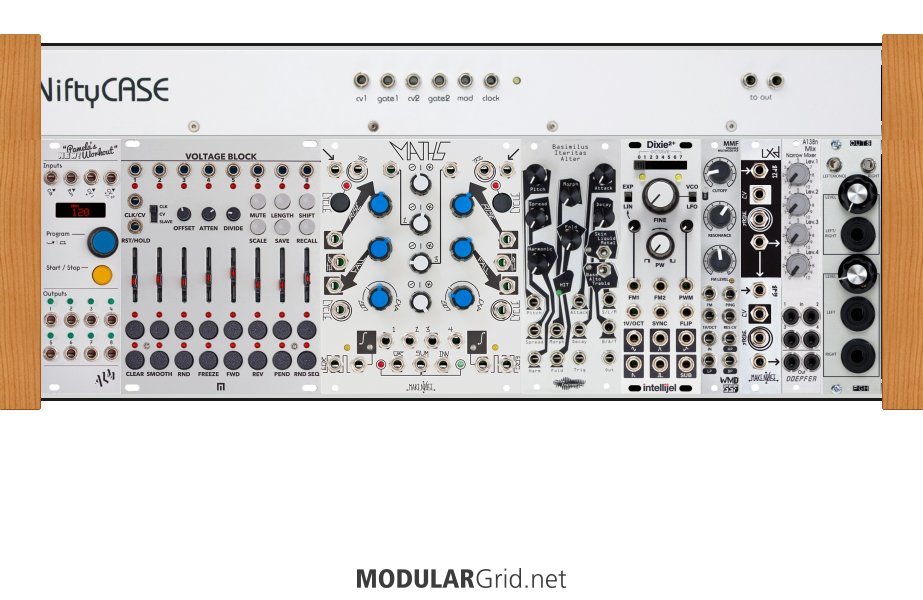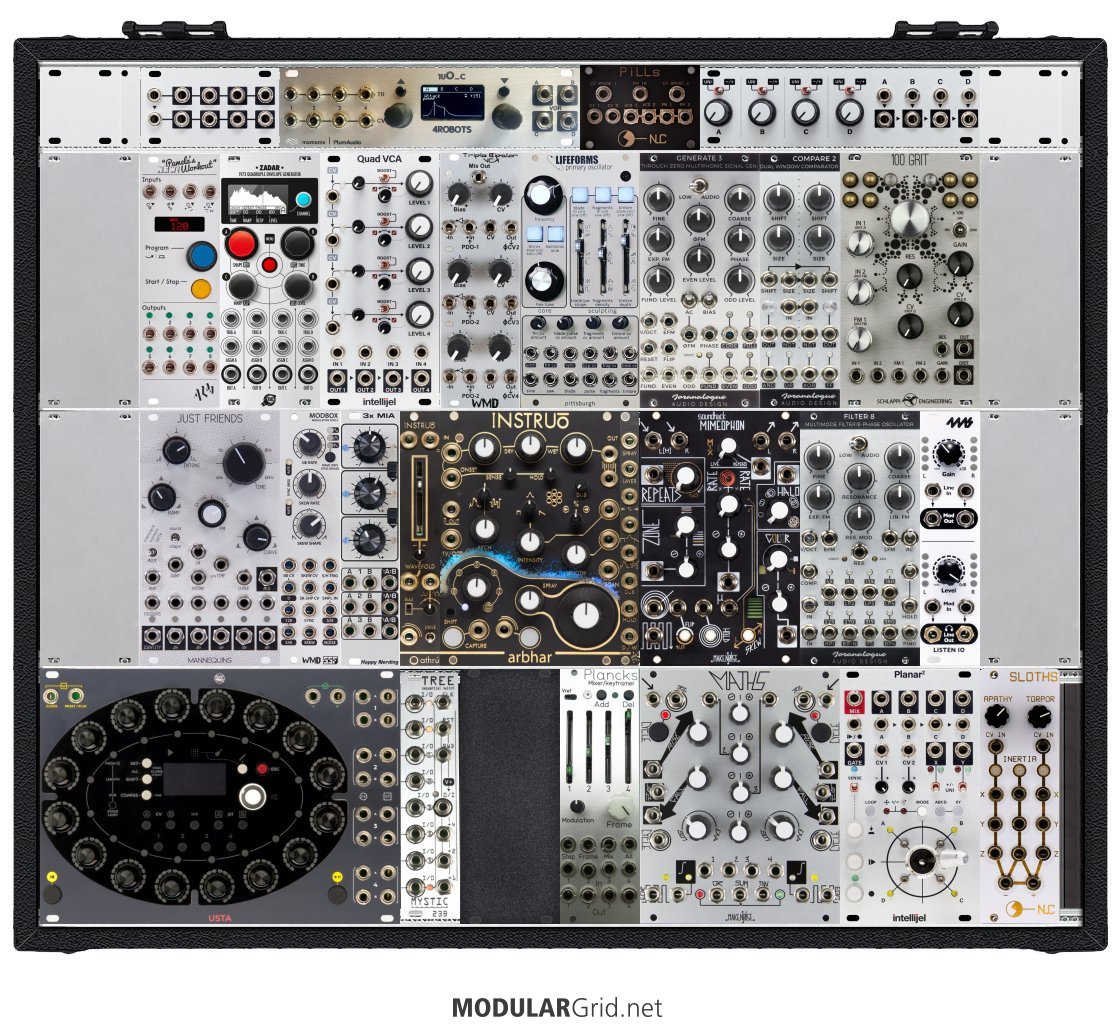Hi Marco,
What an interesting build! Let's break this down. Currently you have:
Sound Sources (4.5) - Mangrove, Twin Waves, Erica Drum, Mimeophon, [URA kinda?]
VCAs/LPGs (7) - DPLPG [2], ADDAC802[5]
Envelope Generators (4) - Maths [2], A140 [2]
Attenuators (12) - Levit8[8], Maths[4]
Mixers (4) - Levit8, Maths, Mix4, ADDAC802
Filters (2) - Sisters, Polaris
LFOs (6) - Maths (2), Twin Waves (2), Modbox (2)
Clock Modulator (2) - Tempi, Metropolis
Sequencer (2) - Metropolis, Trax
Random (3) - NSE, RND, URA
Quantizer (1) - uTune
Effects (1) - Mimeophon
To me this reads as supporting full voice synth voices and one (2-channel) drum voice, which sounds like what you're after. Sweet! However, there are a few small questions that I would ask. None of these are big and you've done a great job. Just a few things to consider:
You say that you are focused on melody creation and to that end you have the Metropolis and the various noise/random sources going into the uTune, but I'm curious how you came to these modules specifically. The Metropolis is a nice sequencer (if not a little large), but the uTune is a somewhat specific quantizer for people who need its microtonal features. It's pretty menu-heavy and I wonder if a more general quantizer like the Intellijel Scales, might not be a better and more versatile choice. If you don't mind menus, and Ornament and Crime would offer a lot more quantizing more (and more) in a similar footprint.
You have 2-3 voices and a drum machine, but the Metropolis can only output 1 pitch and 1 gate. I suppose the Trax is there to serve as a second sequencer, but I just want to bring up the idea of something modules like the Rene or the Qu-bit Bloom which have a few more outputs and might be more musically interesting. You could even combine a smaller, conventional sequencer with something weird like the Bloom. You have enough space between your two sequencers that, unless you absolutely need the Roland-style sequencer, you have a lot of perhaps deeper options. You might even consider replacing the Trax with a Euclidean Circles (which gives you 6 whole channels of hand-on gates). I always find that I need more gates than I expect, especially if I'm working with drums. (Remember, a main reason for spending as much space on the Erica as you have is that it has two channels, which means double the inputs, double the shaping)
One final note on sequencers: if you replace your quantizer with something more fully featured like the o_c or the Scales, you get a sequencer(s) there, too.
The only thing this rack feels light on is modulation. Other than your Modbox, you are looking at Maths + one of your oscillators in LFO mode. Just like you can never have too many VCAs, I feel like the same is true with LFOs. In addition to modulating a parameter, they are great to modulate a VCA to add extra life/variation to some other modulation/envelope/gate/etc. I'd consider going up to at least a quad lfo (like Batumi). Maths is great in a pinch, but remember that Maths is also your third and fourth envelope (and you have three full voices in this rack). The Mimeophon really gobbles modulation and often wants as much as you can throw at it,
You might want to slightly tweak your random plan. You have 14hp of dedicated random/noise/sh modules. Given the small number of non-random modulators, I'd consider scaling down to, perhaps, a Wogglebug or a Turing Machine (great for melodies). Then, you can expand your LFO to a quad that, perhaps, has a random LFO. I think you'll appreciate that extra flexibility.
Those are the main things I would think about. Hope this was at all helpful.
Best,
E



